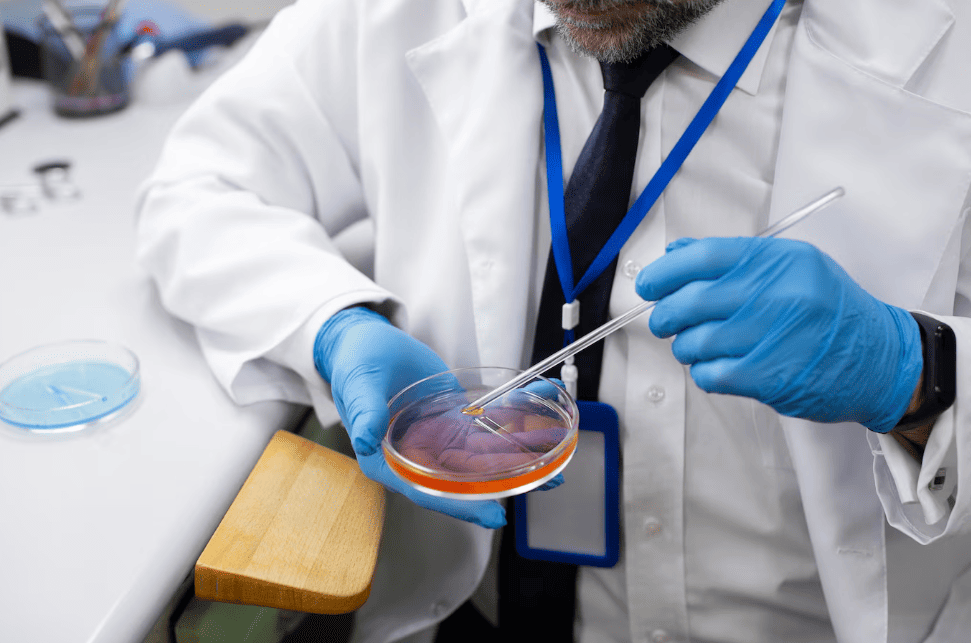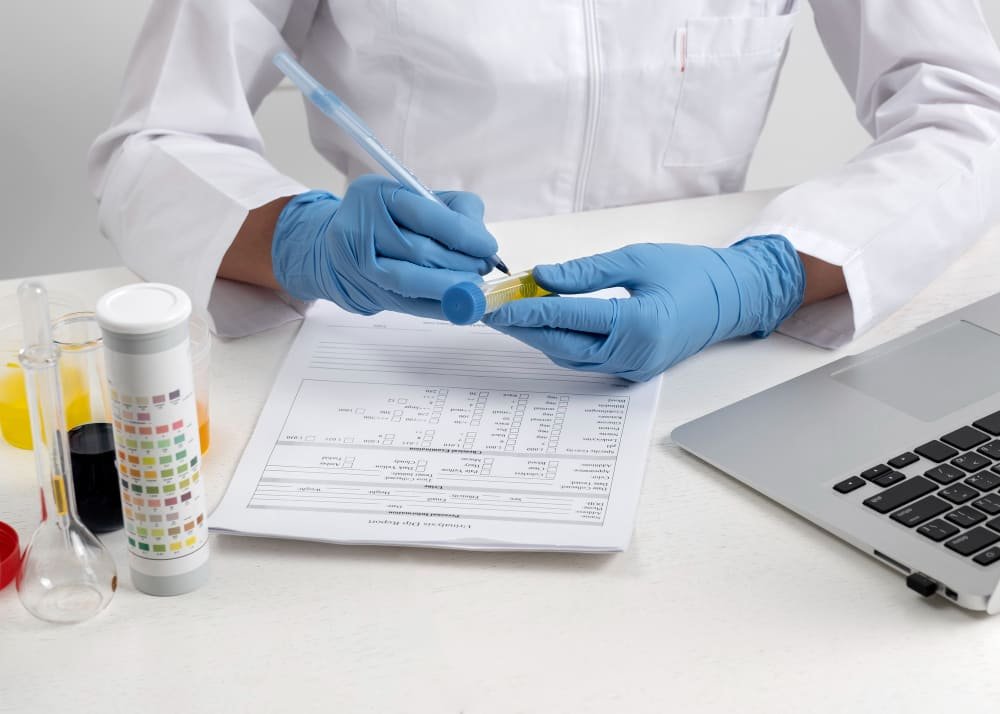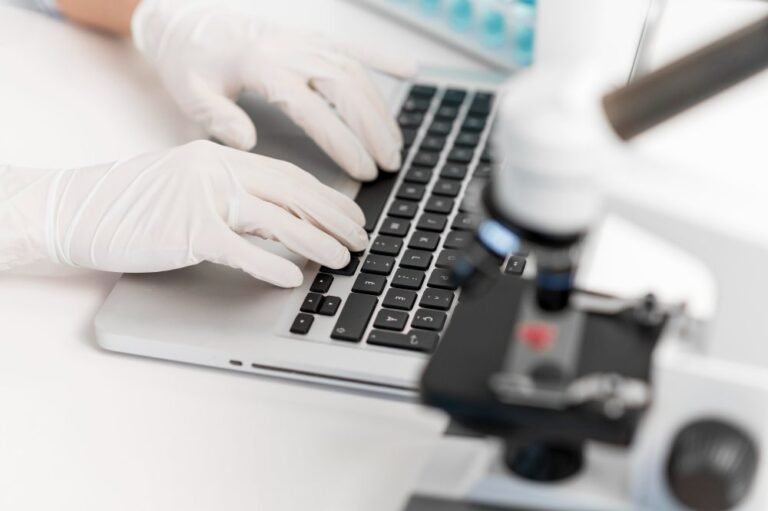Behind 70% of all healthcare decisions is a critical technology that most patients never see. In vitro diagnostics — tests performed on blood, urine, tissue, and other samples outside the human body — guide physicians during some of the most crucial moments in medical care.
The numbers tell a compelling story: approximately 40,000 in vitro diagnostic products exist today, covering everything from basic laboratory tests to sophisticated point-of-care systems. These diagnostic tools operate in test tubes and laboratory equipment, analyzing samples to detect diseases, monitor treatments, and evaluate patient health.
Here’s what makes this particularly important for manufacturers: test reliability directly determines whether patients receive appropriate medical care.
This reality has led regulatory authorities worldwide to establish stringent frameworks governing the safety and effectiveness of IVDs.
At Sobel, we have a division dedicated to IVDs. That’s why we created this guide — to explain the fundamentals of in vitro diagnostics, their role in healthcare, and the regulatory requirements they must meet before they reach patients and medical facilities.
What is In Vitro Diagnostics (IVD)?
The term in vitro comes from Latin and means “in glass” — a simple definition that perfectly captures how these tests work.
Unlike procedures performed directly on patients, IVDs analyze samples outside the body, typically in test tubes, Petri dishes, or specialized laboratory equipment.
From basic testing methods to advanced diagnostic systems, this technology has become essential for healthcare decisions worldwide.

Definition of in vitro diagnostic products
In vitro diagnostic products (IVDs) are tests or examinations performed on samples taken from the human body, such as blood, urine, tissue, or other body fluids.
These medical devices are designed for the collection, preparation, and analysis of human samples with the purpose of detecting diseases, monitoring health status, and guiding therapeutic decisions.
Regulatory authorities define IVDs as “reagents, instruments, and systems intended for use in the diagnosis of diseases or other conditions, including the determination of health status, in order to cure, mitigate, treat, or prevent diseases or their sequelae.”
Although they operate outside the human body, IVDs are classified as medical devices within regulatory frameworks.
Difference Between In Vitro and In Vivo Tests:
Understanding the distinction between these testing approaches is crucial for manufacturers developing diagnostic products:
| In vitro tests (meaning “in glass”): | In vivo tests (meaning “within the living”): |
| Performed outside living organisms | Performed within or on whole living organisms |
| Use samples such as cells, blood, or tissue in controlled laboratory environments | Include tests conducted on humans, animals, or plants |
| Allow direct research methodologies with controlled variables | Better evaluate safety, toxicity, and efficacy in complex biological systems |
| Enable detailed analysis across a larger number of samples or individuals | Account for interactions between cells and biochemical processes |
| Cannot fully replicate conditions inside living organisms | Typically require more time and resources |
Both testing approaches are essential in medical research. In vitro studies generally precede in vivo research for ethical reasons, allowing substances to be studied in a controlled environment before exposing humans or animals to potential risks.
Common examples of IVD testing
The IVD market covers a wide range of applications across different healthcare settings.
Clinical laboratory tests analyze blood chemistry, including glucose levels, cholesterol, and markers of liver and kidney function.
Immunochemical tests detect and measure proteins, hormones, and tumor markers to assess immunological status.
Molecular diagnostic methods, such as PCR (polymerase chain reaction), detect genetic material to identify diseases and are particularly effective in diagnosing infectious conditions.
Point-of-care testing (POCT) refers to diagnostic tests performed outside the traditional laboratory environment, near or beside the patient, using devices intended for use by healthcare professionals rather than for self-testing.
Common examples of everyday IVD products include pregnancy tests, COVID-19 tests, blood glucose meters, HIV screening tools, and cancer biomarker tests. These products come in various forms: reagents, calibrators, control materials, kits, instruments, software (including mobile applications), and sample containers.
How IVDs Are Used in Healthcare
IVD tests play a role in all critical decision-making moments in modern healthcare — from the first signs of illness to final treatment adjustments.
Screening and Early Detection
One of the greatest strengths of IVDs is their ability to detect diseases before symptoms appear. This early identification can help prevent disease progression to more advanced stages, which are typically more challenging and costly to treat. Population screening programs rely on IVDs to identify potential health issues in individuals who appear healthy.
Key screening applications include:
- Identification of infectious diseases – Rapid diagnostic tests detect pathogens such as HIV, hepatitis, and influenza, enabling timely treatment and containment.
- Prenatal screening – Non-invasive prenatal tests analyze maternal blood samples to assess fetal health, reducing the need for invasive procedures.
Diagnosis and Treatment Planning
When patients present with symptoms, IVDs provide objective data to identify underlying causes and support clinical decision-making.
This diagnostic capability is particularly valuable in personalized medicine, where treatments are tailored to each patient based on their unique genetic profile or disease characteristics.
Monitoring Disease Progression
Effective treatment often depends on continuous monitoring. IVDs enable ongoing assessment of patient responses to therapy, allowing healthcare professionals to adjust treatment strategies to improve outcomes and minimize adverse effects.
Patients with chronic conditions such as diabetes, cardiovascular disease, or cancer require regular monitoring to track disease progression and treatment effectiveness.
IVD tests provide healthcare professionals with timely, reliable data to guide necessary treatment adjustments.
Epidemiological Surveillance
IVDs play a critical role in public health, extending beyond individual patient care. These tools enable the tracking of disease prevalence and transmission patterns within populations.
The COVID-19 pandemic highlighted the importance of this capability, with governments worldwide recognizing the need to maintain testing programs in readiness for future outbreaks.
When integrated into surveillance networks, IVDs support accurate case identification and rapid containment measures, directly strengthening pandemic preparedness and response capacity.
This epidemiological application generates valuable data that informs public health policies and guides targeted prevention strategies.

Overview of Anvisa’s regulatory process
Brazil is one of the fastest-growing IVD markets — a country with specific regulatory requirements that all manufacturers must understand.
Anvisa serves as the sole regulatory authority for in vitro diagnostic products in Brazil. While documentation from other authorities such as the FDA and EU can often be leveraged, manufacturers must still meet specific requirements for the Brazilian healthcare context.
The regulatory foundation is established under Resolution RDC 830/2023, which sets out the Brazilian framework for IVDs. This resolution defines classification criteria, regulatory pathways, and quality standards that manufacturers must meet before obtaining market access.
Anvisa’s focus is clear: verifying that products demonstrate quality, safety, and effectiveness in line with Brazilian standards.
Foreign manufacturers face a requirement similar to other regulatory jurisdictions — the appointment of a Brazilian Registration Holder (BRH) to represent them before Anvisa.
This local entity assumes legal responsibility for the product in Brazil and serves as the primary channel of communication with the regulatory authority. Without a qualified BRH, foreign companies cannot proceed with registration.
Classification of IVD in Brazil
Brazil’s risk-based classification system divides IVDs into four classes according to their potential risk to individual and public health:
- Class I – Low-risk products with minimal potential for harm (e.g., basic laboratory reagents)
- Class II – Moderate-risk products (e.g., clinical chemistry analyzers, culture media)
- Class III – High-risk products (e.g., infectious disease tests, such as hepatitis)
- Class IV – Maximum-risk products (e.g., HIV tests, blood screening tests)
This classification directly impacts documentation requirements, review timelines, and registration complexity. Higher-risk classes are subject to more rigorous requirements and longer approval processes.
Identifying your product’s classification from the outset helps establish realistic timelines and allocate resources effectively.
Steps for IVD registration with Anvisa
The IVD registration process in Brazil typically follows these steps:
- BRH Appointment: Designate a qualified Brazilian Registration Holder with appropriate technical expertise.
- Product Classification: Determine the correct risk class according to Anvisa’s classification rules.
- Documentation Preparation: Compile technical dossiers, quality management certificates, and clinical evidence.
- Good Manufacturing Practices (GMP): Obtain certification through factory inspections or documentation review; applicable only for Class I and II products.
- Application Submission: File through Anvisa’s electronic system along with applicable fees.
- Registration Approval: Receive marketing authorization valid for 10 years.
- Post-Marketing Surveillance: Maintain surveillance reports and fulfill renewal obligations.
Class III and IV products undergo more rigorous review processes, often requiring additional clinical data and longer timeframes.
The overall process can vary from several months to over a year, depending on product classification and the quality of submitted documentation.
Why Sobel is a trusted expert in Brazil’s IVD market
At Sobel, we recognize that the IVD regulatory pathway in Brazil presents both opportunities and complexities for international manufacturers.
Our expertise covers all product classifications, from basic laboratory reagents to advanced molecular diagnostic systems.
We offer specialized IVD services, including:
- Strategic regulatory planning tailored to IVD-specific requirements
- Classification determination and submission strategy development
- Preparation of technical documents aligned with Anvisa’s expectations
- BRH services provided by qualified regulatory professionals
- GMP certification support and factory inspection preparation
- Post-approval maintenance and surveillance reporting
We stay current with Brazil’s constantly evolving IVD regulatory landscape, helping manufacturers avoid common pitfalls that can delay approvals or lead to costly resubmissions.
Brazil’s diagnostic market offers significant potential for manufacturers who understand its regulatory requirements. At Sobel, we assist companies in entering this market efficiently, ensuring full compliance with Anvisa’s standards.

Regulatory Pathways for IVDs Around the World
The same in vitro diagnostic device may be subject to different regulatory requirements depending on the market where it is intended to be sold.
Each major market has developed its own approach to ensuring the safety and effectiveness of IVDs, creating distinct challenges for manufacturers seeking global access.
FDA Classification: Class I, II, III
The United States classifies IVDs into three risk categories, with each class determining its regulatory pathway.
Class I devices present minimal risk and often qualify for simpler 510(k) submissions, while Class II devices require more extensive documentation. Class III devices — those that may pose significant risks — undergo the most rigorous review process through Premarket Approval (PMA).
Adding complexity, the FDA maintains these classifications across various sections of the federal regulations (21 CFR 862, 864, and 866). Determining the correct classification requires careful analysis of the specific device and its intended use.
EU IVDR and UK Frameworks
Europe faces its own challenges since the IVDR came into effect in May 2022. The European Union’s approach differs significantly from the FDA’s three-tier system by using risk classifications that consider impacts on individual and public health.
Post-Brexit, the United Kingdom now operates under its own MDR 2002 framework.
Companies can place CE-marked IVDs on the Great Britain market until June 30, 2030 — but only if specific compliance conditions are met. This transition period will not last indefinitely, so manufacturers need clear strategies to access both EU and UK markets.
Compliance, Innovation, and Global Reach
IVDs have become the invisible foundation of modern healthcare. From simple pregnancy tests to advanced molecular diagnostics, these testing products guide critical health decisions across screening, diagnosis, treatment planning, and disease monitoring.
IVD technology continues to evolve rapidly, expanding into personalized medicine and point-of-care applications. This evolution makes understanding regulatory pathways increasingly important for manufacturers seeking global market access. While requirements vary across jurisdictions, the fundamental goal remains consistent: providing patients with safe and effective diagnostic tools.
The future of healthcare depends on accurate and accessible diagnostics. Manufacturers who successfully navigate regulatory frameworks will drive the next generation of medical tests and improve patient outcomes worldwide.




